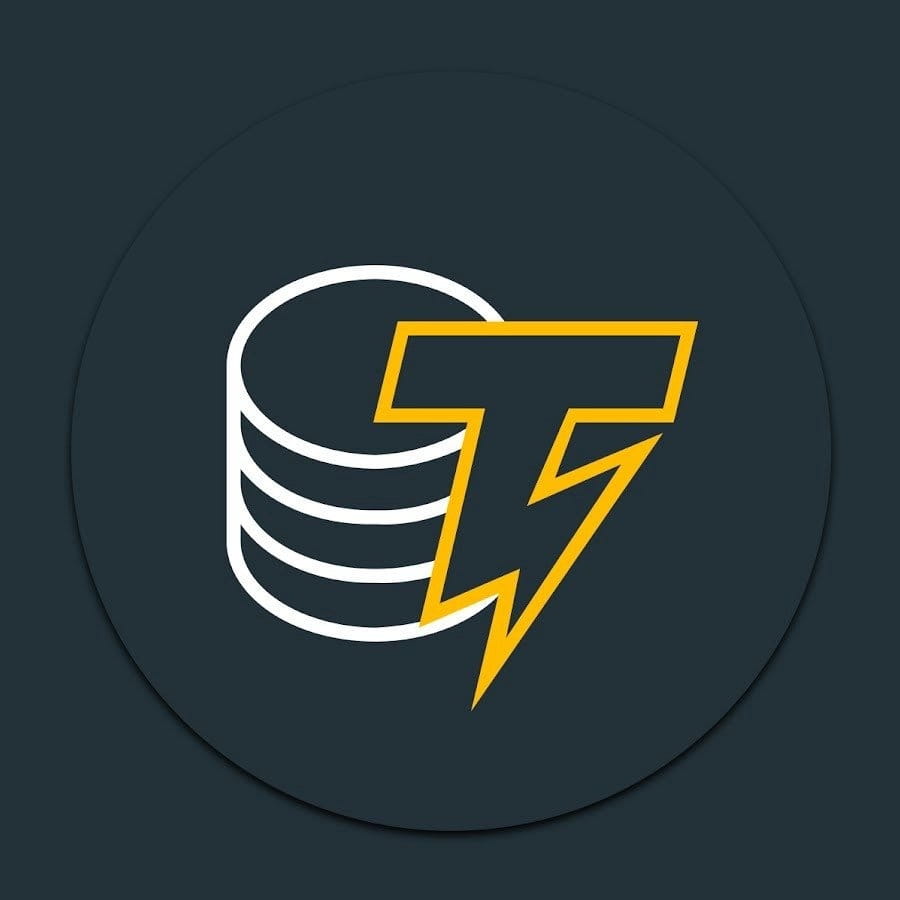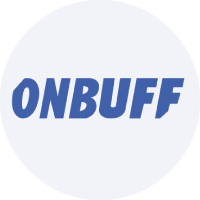Exploring the Technology Powering $RDAC
Sure! Here’s a rephrased version of the topic along with a standard analysis:
⸻
Introduction
$RDAC is a token or project operating within the blockchain or decentralized ecosystem. To grasp its potential and value, it’s essential to understand the technology that underpins it. This analysis will provide a clear overview of the technological foundation of $RDAC, highlighting its architecture, functionality, and implications for users and investors.
⸻
1. Blockchain Infrastructure
At its core, $RDAC is likely built on a decentralized blockchain platform such as Ethereum, Binance Smart Chain, or another EVM-compatible chain. These platforms provide a secure and transparent ledger system where all transactions are recorded and verified by a distributed network of nodes. This ensures data immutability, resistance to censorship, and increased security.
Key Features:
• Smart Contracts: $RDAC uses self-executing smart contracts to automate agreements and processes without intermediaries.
• Decentralization: The network operates without a central authority, relying on consensus mechanisms such as Proof-of-Stake (PoS) or Proof-of-Work (PoW).
• Interoperability: If $RDAC is cross-chain compatible, it can interact with other blockchains to increase usability and adoption.
⸻
2. Utility and Functionality
Understanding what $RDAC is used for reveals its technological application. Whether it functions as a governance token, a medium of exchange, or part of a decentralized application (dApp), its role determines the technical features required.
Possible Use Cases:
• Governance: Token holders may vote on protocol changes, funding decisions, or future development goals.
• Incentives and Rewards: $RDAC may power staking, liquidity provision, or other DeFi mechanisms.
• Access Rights: It might grant users access to certain services or premium features within its ecosystem.
⸻
3. Security Protocols
Security is a critical concern for any blockchain project. $RDAC likely implements several layers of protection:
• Audited Smart Contracts: Independent audits reduce the risk of bugs or vulnerabilities.
• On-chain Monitoring: Tools and protocols may track unusual activity to prevent exploits.
• Token Standards: Following established standards (like ERC-20 or BEP-20) enhances compatibility and trust.
⸻
4. Scalability and Performance
Scalability determines how well $RDAC can grow with increased demand. Depending on its design, it might incorporate technologies such as:
• Layer 2 Solutions: Optimistic Rollups or zk-Rollups to reduce congestion.
• Sharding: Distributing the network load to improve throughput.
• Gas Optimization: Efficient contract design to minimize transaction fees.
⸻
5. Community and Developer Ecosystem
Technology thrives with strong community support and developer activity. A vibrant ecosystem around $RDAC suggests continuous improvements and long-term viability.
• Open-Source Development: Encourages transparency and innovation.
• Active Community: Promotes adoption, trust, and feedback-driven development.
• Partnerships and Integrations: Boosts the utility and real-world impact of the token.
⸻
Conclusion
The success and sustainability of $RDAC rely heavily on the strength of its technological foundation. From secure smart contracts and scalable infrastructure to a committed community, understanding these components provides deeper insight into its potential. As blockchain evolves, projects like $RDAC that prioritize innovation, utility, and security are likely to gain a competitive edge in the decentralized landscape.
⸻
$RDAC: A Paradigm Shift in Decentralized Asset Management?"**
What is $RDAC (R. D .A .C)
$RDAC (Revolutionary Decentralized Asset Control) is a blockchain-based protocol designed to transform asset management by leveraging decentralization, smart contracts, and tokenization. This analysis evaluates $RDAC against key industry standards to assess its viability, innovation, and potential impact.
2. Compliance & Regulatory Standards
- Smart Contract Security: $RDAC must adhere to formal verification standards (e.g., CertiK, OpenZeppelin audits) to ensure tamper-proof execution.
- KYC/AML: If handling regulated assets, compliance with FATF and local financial regulations is critical.
- **Token Standards: Should follow ERC-20, BEP-20, or similar for interoperability.
3. Technical Standards
- Decentralization: Must maintain a robust consensus mechanism (PoS, DPoS, etc.) to prevent centralization risks.
- Scalability: Should support Layer-2 solutions (e.g., zk-Rollups) to handle high transaction volumes.
-Interoperability: Cross-chain compatibility (via Polkadot, Cosmos, or bridges) is essential for multi-asset management.
4. Economic & Governance Standards
- Tokenomics:
- Deflationary mechanisms (burning, staking rewards).
- Transparent supply distribution (avoiding whale dominance).
- DAO Governance: Community-driven proposals and voting ensure decentralized decision-making (e.g., Snapshot integration).
5. Security Standards
- Audits: Regular third-party audits (e.g., Quantstamp, Hacken).
- Insurance: Partnerships with Nexus Mutual or similar to cover smart contract risks.
- Penetration Testing:** Ongoing vulnerability assessments.
6. Market Adoption & Use Cases
- Institutional Integration: Partnerships with traditional asset managers for hybrid DeFi/TradFi solutions.
- Real-World Asset (RWA) Tokenization: Support for equities, commodities, or real estate to expand utility.
7. Competitive Benchmarking
Compare $RDAC against leading DeFi asset managers (e.g., Yearn Finance, Aave) in:
- Yield optimization.
- Risk management tools.
- User experience (UI/UX).
8. Risks & Challenges
- Regulatory Uncertainty: Evolving global crypto laws may impact operations.
- Smart Contract Bugs: Exploits could undermine trust.
- Market Volatility: Token price instability affects protocol stability.
9. Lastly
$RDAC has the potential to redefine decentralized asset management if it meets stringent technical, regulatory, and economic standards. Success hinges on robust security, scalable infrastructure, and real-world adoption.
Why DeFi Will Skyrocket in 2025: The Key Trends to Watch!
The decentralized finance (DeFi) space has already seen monumental growth over the past few years. As we enter 2025, experts predict that DeFi could reach new heights, driven by innovations, increased institutional interest, and the continued shift from traditional financial systems. But what are the key trends that will shape DeFi’s trajectory this year?
In this article, we’ll explore the crucial factors contributing to the rise of DeFi in 2025, including new technological advancements, emerging protocols, and institutional adoption that will play a vital role in driving the ecosystem forward.
1. Layer 2 Solutions and Scalability Innovations
One of the biggest challenges facing DeFi has been the scalability of existing blockchains. Ethereum, the most widely used blockchain for DeFi applications, has been burdened with high transaction fees and slower speeds during peak usage periods. However, Layer 2 solutions (like Optimism, Arbitrum, and zk-Rollups) are rapidly changing the landscape.
Why It’s Exploding:
Faster and Cheaper Transactions: Layer 2s alleviate the strain on Ethereum by processing transactions off-chain, reducing costs and increasing transaction speeds.
Increased DeFi Adoption: With lower costs and improved speed, more decentralized applications (dApps) are migrating to Layer 2, leading to higher user adoption and growth for the entire DeFi sector.
2. Institutional Adoption of DeFi
2025 could be the year when institutional investors start to take DeFi seriously. With the growing maturity of DeFi protocols and a more favorable regulatory environment, large financial institutions, hedge funds, and banks are beginning to dip their toes into the space. The influx of institutional capital is set to bring much-needed liquidity and credibility to the DeFi market.
Why It’s Exploding:
New Financial Products: Institutions are already working on new ways to bridge traditional finance with decentralized systems, including DeFi yield farming, lending protocols, and tokenized assets.
Increased Market Liquidity: As more institutions enter the market, DeFi will gain access to deeper liquidity pools, resulting in better prices and more robust market behavior.
3. Cross-Chain Interoperability
DeFi applications have been mostly siloed on their respective blockchains, but cross-chain interoperability protocols are changing the way DeFi operates. With platforms like Polkadot, Cosmos, and Thorchain facilitating the seamless exchange of assets between different blockchains, users can now access DeFi services across multiple ecosystems.
Why It’s Exploding:
Wider Market Reach: With better interoperability, users will be able to access liquidity and services from various blockchain networks without the restrictions of a single ecosystem.
More Collaboration: Cross-chain interoperability will encourage DeFi projects to collaborate and offer more expansive solutions to users, which increases user engagement and adoption.
4. The Rise of Decentralized Autonomous Organizations (DAOs)
Decentralized Autonomous Organizations (DAOs) are becoming increasingly important in the governance and decision-making processes of DeFi protocols. By giving token holders a say in the governance of a project, DAOs offer true decentralization, which is the core ethos of DeFi.
Why It’s Exploding:
Community-Led Governance: DAOs empower the community to directly influence the direction of a project, creating a more transparent, participatory environment.
Improved Security and Trust: By removing centralized control, DAOs ensure that no single entity has the ability to manipulate or control the protocol, building trust among users.
5. DeFi Lending and Borrowing Protocols
DeFi lending and borrowing protocols have already disrupted traditional finance, and in 2025, these platforms will continue to evolve. With higher yields and more innovative features, platforms like Aave, Compound, and MakerDAO are poised to take over a larger share of the lending market. Additionally, collateralized loans and flash loans are expected to grow in popularity.
Why It’s Exploding:
High Yield Opportunities: DeFi lending protocols often offer much higher returns than traditional financial institutions, attracting more users.
Expanding Use Cases: From collateralized debt positions (CDPs) to algorithmic stablecoins, DeFi lending will see more innovation and increase its market share.
6. Regulatory Clarity and DeFi's Future
As the DeFi space matures, the increasing attention from regulators is expected to bring more regulatory clarity in 2025. While there have been concerns about DeFi being a target for regulatory crackdowns, many believe that clear regulations will offer legitimacy and safety for both investors and developers.
Why It’s Exploding:
Global Adoption: With clear regulations, traditional investors will feel more confident to participate in DeFi, knowing their investments are protected.
New Opportunities: As DeFi becomes more compliant with regulations, new opportunities will emerge, allowing institutional capital and larger firms to invest in the space.
Conclusion
The future of DeFi in 2025 looks incredibly bright, with Layer 2 solutions, institutional adoption, and cross-chain interoperability driving its explosive growth. As DeFi continues to evolve, it will play an increasingly central role in the global financial ecosystem. If you're a crypto investor, now is the time to pay attention to these trends and get involved in the DeFi revolution.
By staying ahead of these emerging trends, you can position yourself for the next wave of growth and gain exposure to some of the most exciting developments in the crypto space.
Disclaimer
This article is for informational purposes only and does not constitute financial advice. Cryptocurrency investments carry a high level of risk and volatility. Always conduct your own research (DYOR) and consult a professional financial advisor before making any investment decisions.


 最低價
最低價 最高價
最高價 



















